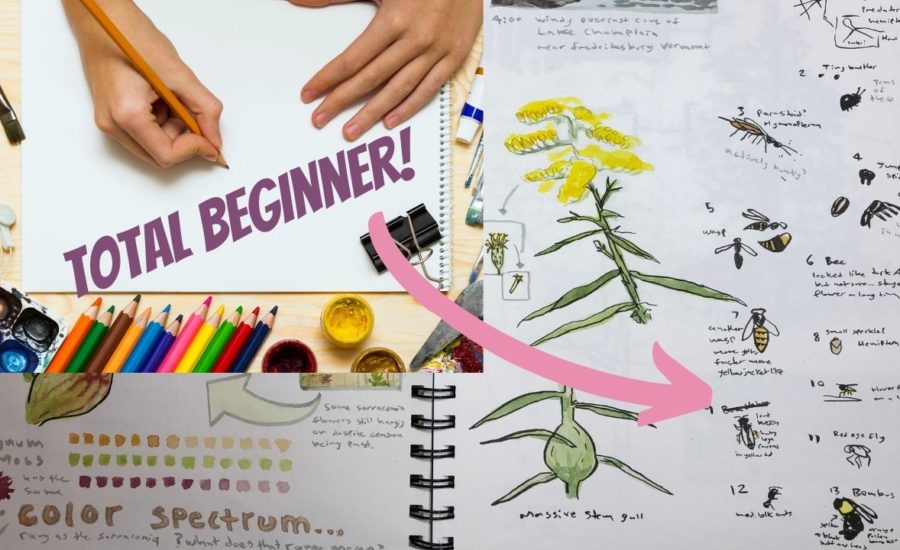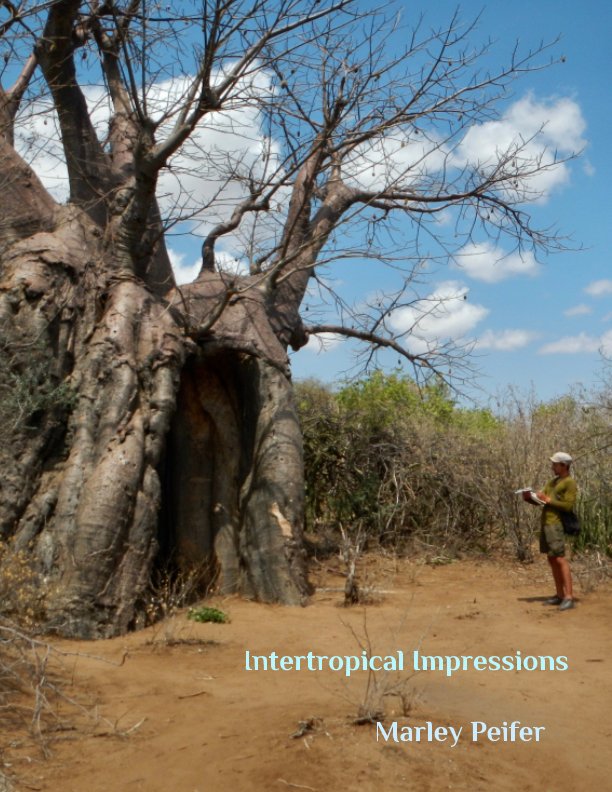Do you want the best tips on nature journaling for beginners distilled from years of teaching, interviewing beginners and experts, and watching how newbies learn nature journaling? I have talked to dozens of nature journal educators, nature journaling kids, homeschool families, beginners from all walks of life. In addition, I have made dozens of episodes specifically about how to get started with nature journaling. Right now, I will try to summarize the most important essentials for you. I will talk about 10 terms you should know, the best art supplies and journals and the rationale behind choosing the best ones for you, and how to nature journal in 10 easy steps.
FIve Tips for Total Beginners
Here are five tips I got from my friend and novice nature journaler Heather Crellin. Heather started nature journaling at the beginning of the Covid-19 pandemic in the spring of 2021.
- First, make an easy routine. Especially at first. Don’t be over ambitious. Regularity and frequency are more important than marathon sessions. Heather recommends nature journaling for only 10 minutes. Everyone can make 10 minutes in their day to practice nature journaling.
- Next, keep a small nature journaling kit with you at all times. Similarly to the last tip, this tip helps you make use of small amounts of time. For example, you might be waiting to meet someone and have 10 minutes at a park or outside a cafe. If you have a nature journal kit in your purse you could use that time to nature journal the sky or a leaf.
- Identify your “nearby nature” or “daily nature.” Heather did not have access to wide open nature spaces during the pandemic. Nevertheless, she was able to identify nature in unexpected places. This became the subject for her nature journaling. Examples of daily nature could be: the sky,house plants, heads of cabbage, sprouting potatoes in your cupboard, your pet, etc.
- Think of you nature journal time as “me time.” Many people in the nature journal community are nurturers that have spent much of their life taking care of other people. Nature journaling can be a chance to recharge. You don’t have to feel guilty about it. On the contrary, this “me time” helps you be a better spouse, friend, parent, grandparent etc.
- Find community for nature journalers. Last, but certainly not least is to find community. This is one of the best ways to accelerate your learning and keep it fun.
Ten Terms Nature journalers should know
Similarly to other hobbies nature journaling has its own lingo. Nature journaling for beginners can be hard if you don’t know these terms.
- Pencil Miles: This is a cool phrase that summarizes the importance of repetition and practice for the improvement of drawing.
- Meta-Data: This heading at the beginning of our page gives contextual info about the location, weather, the time, etc.
- Landscapitos: These are small landscape drawings. For more about them check out this post on Landscapitos.
- Non-Photo Blue Pencil: Many nature journalers use these pencils for a faint under-drawing. Check out what John Muir Laws loves about them!

- The Pretty Picture Trap: Even though we all like beautiful drawings the fact of focusing on making pretty pictures can be a problem.
- Precious: Sometimes, when I have a drawing that is looking good, I start taking fewer risks because I start getting precious about it . This can hamper our learning. Similarly, this problem can emerge if you have really fancy materials or watercolor paper and you are hesitant to mess it up. Don’t get precious with your drawing, page, or journal.
- Stealing Ideas: We use the word “stealing” in a positive way because we want people to be able to share ideas and learn from each other. Therefore, next time you are in a journal share “steal” some good ideas from someone instead of just admiring their pretty page.
- Post Hoc: Any nature journaling work that you do after the field trip is called post hoc which means “after” in Latin.
- Sacrificial Pancakes: These are the first drawings we make in a session while we are warming up because you have to make these before you can make good ones!
- If you want the tenth term you have to watch the video. this post for the complete video.
How to nature journal in 10 steps
-
- First, choose your location wisely. Choose a location that is close, convenient, and comfortable. This is a common mistake that beginners and experienced nature journalers both make. You don’t need the most exciting wilderness location to nature journal.
- Next, get your supplies ready. One mistake that many of us make is to get more art supplies than we really need. All you really need is a good bag, a sketchbook, a pencil, and whatever you need to be comfortable in nature. For a review of what I use see Journaling Kit Review
- Capture the context quickly. Whip your nature journal out and start using it as soon as possible. A common mistake is to wander around for too long waiting for inspiration. There is no perfect subject and the muse will not come to you if you don’t get some pencil miles first. Start by putting metadata, sketching a map, or getting other contextual information on the page.
- Warm up your brain with “I notice, I wonder, it reminds me of.” Before you get caught up in trying to paint a portrait of a bird or flower start with this simple observation exercise. In this way you will warm up your observation skills and you will breach the barrier of the blank page.
- Now, draw a landscapito or paint a scene. Drawing a small landscape or scene will convey the feeling and ecology of a place. These will help you remember your trip and they look great on the page combined with your other notes and drawings. However, there are also side benefits of sitting still this long. Birds and animals often come close! For more on drawing landscapitos see these videos
“The real voyage of discovery consists not of seeing new landscapes but in having new eyes”
–Marcel ProustNext 5 Steps
- Draw a Diagram. The next step is to draw a diagram of something that you are curious about. By making it a diagram you take the pressure off of it being a pretty picture. Use arrows, words, and numbers to add information that you can not convey with the image itself.
- Ask more questions. This is one of the most powerful tools of nature journaling. By practicing asking questions we sharpen our ability to learn new things.
- Stop before you are done. While you might be tempted to push yourself at first it is actually best to stop while you are still having fun. Start by giving yourself short outings that leave you wanting more. Like the small servings at a fancy restaurant.
- Get yourself an Ice Cream. Now that you have completed a session of nature journaling get yourself a reward. You deserve it and by rewarding yourself you will help ingrain this new habit.
- Review your work and share it: When you get home you can accelerate your learning by reviewing it, researching further, and getting feedback from others. What do you notice about your pages? What could be better? Can you think of more questions? Are there parts you would like to add color to now that you are home? Are there things you want to research further? Now is also a time that you could draw more detailed drawings based on photos you took on the outing, especially of fast moving birds or insects that you could not capture in the field. Sharing online and getting feedback from other nature journalers will also help you a lot.
See the whole video on “How to Nature Journal in 10 Steps”
Bonus tips
- Create a piggyback habit. For example, you might drink coffee every morning.
- Avoid Friction. This is the word I uses to describe all the little things between you and nature journaling. Pulling out your nature journal, opening the zipper to your bag, driving to the park, taking off your backpack to get your journal. All of these things are friction. The more friction the easier it is to procrastinate and never end up journaling.
- Two crappy pages a day. The idea here is to set a really low bar that is based on quantity not quality. This can be very liberating for nature journal beginners.
- Give yourself permission to try. This idea is similar to the last one. Only you can give this to yourself. Especially helpful when it is a challenging subject that you are about to draw or a new technique or some other challenge. It is ok if it doesn’t come out perfect. Just try.
“But I don’t have time for nature journaling!”
That is a common excuse so I made this video to help you out with that problem.
<
Supplies for Nature Journaling Beginners
Here are some of the supplies I recommend for nature journaling beginners. Since these are affiliate links I will get a small percentage at no extra cost to you if you make a purchase using the link.
- Close Focus Binoculars: https://amzn.to/3dS4zs0
- Pilot Futayaku Gray and Black Brush pen: https://amzn.to/3deM4yV<
- Pentel Waterbrush Large: https://amzn.to/3v0gLyb<
- Watercolor Palette: https://johnmuirlaws.com/product/custom-watercolor-palette/
- Presto Jumbo Correction Pen: https://amzn.to/2QmdsSA<
- My favorite sketchbook (Stilman and Birn Alpha Series) : https://amzn.to/3mUuT9f <
- Pentel Twist-Erase Click Mechanical Pencil: https://amzn.to/3mUxOid
- Medium Binder Clips Box of 12: https://amzn.to/2RrKDVn
- Small Folding Stool: https://amzn.to/3fG4lW4
- My favorite comfy folding chair: https://amzn.to/3oJsu1X







